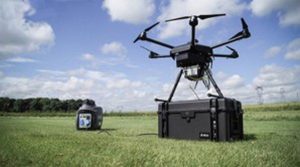Context:
The Indian Army recently signed contracts for the procurement of 130 tethered drones and 19 tank-driving simulators under Emergency Procurement (EP).

Relevance:
GS III: Defence
Dimensions of the Article:
- Tethered Drones: Bridging the Sky and Ground
- Advantages of Tethered Drones
Tethered Drones: Bridging the Sky and Ground
- A tethered drone is an unmanned aerial vehicle (UAV) connected to the ground via a cable or tether.
- It comprises a ground-based base station and the drone, linked through this tether.
Power and Communication
- The tether serves dual purposes, providing both power and data communication to the drone.
- This arrangement enables the drone to operate for extended periods without relying on limited onboard batteries.
Operational Control
- Tethered drones can be remotely operated to execute specific tasks, offering flexibility in their applications.
Advantages of Tethered Drones
- Reliable Data Capture: Tethered UAVs excel in data capture and telemetry due to the dependable tethered connections.
- Reduced Flight Risks: They significantly decrease technical and human errors, minimizing the likelihood of in-flight accidents.
- Secure Communication: These drones establish a secure communication line between the ground station and the aircraft.
- Interference Resilience: The physical tether connection makes tethered drones less susceptible to interference or hacking compared to wireless counterparts.
- GPS Independence: They do not rely heavily on GPS navigation.
- Extended Flight Times: Many tethered drones boast longer flight durations compared to free-flying, battery-operated drones.
- Simplified Operation: Due to restricted movement, operators do not require advanced piloting skills and can focus primarily on task execution.
-Source: The Hindu



